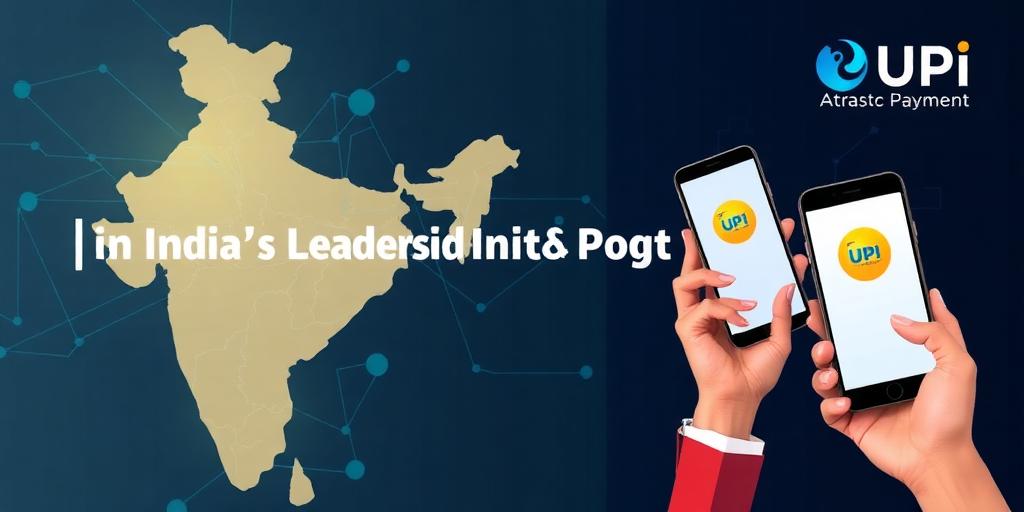The landscape of global finance is continuously evolving, with digital payments emerging as a pivotal force. Within this transformative arena, India stands as a definitive leader, primarily propelled by the phenomenal success of its Unified Payments Interface (UPI). The rise of UPI is not merely a technological advancement; it represents a paradigm shift in how an entire nation conducts its financial transactions, establishing a benchmark for digital payment innovation worldwide. UPI has undeniably positioned India at the forefront of the global digital payments revolution.
Understanding the UPI Phenomenon
Launched in 2016 by the National Payments Corporation of India (NPCI), UPI is an instant real-time payment system that facilitates inter-bank peer-to-peer (P2P) and person-to-merchant (P2M) transactions. Its core innovation lies in its ability to consolidate multiple bank accounts into a single mobile application, enabling seamless fund transfers and merchant payments via a unique Virtual Payment Address (VPA) or QR code. This simplicity and universality have been critical to its widespread adoption, making digital payments accessible to hundreds of millions.
Key Drivers of India's Digital Payments Leadership
The unparalleled growth of UPI can be attributed to several strategic factors:
- Interoperability and Simplicity: UPI's design allows users to transact across various banking platforms and payment applications with a single identifier, eliminating the complexities often associated with digital transactions. This ease of use dramatically lowered the barrier to entry for new users.
- Governmental Support and Regulatory Framework: The Indian government and regulatory bodies, particularly the Reserve Bank of India and NPCI, have actively fostered an environment conducive to digital adoption. Policies such as the zero Merchant Discount Rate (MDR) for UPI transactions further incentivized merchants to embrace the system, contributing significantly to UPI impact on economy.
- High Smartphone Penetration and Data Affordability: The rapid increase in smartphone ownership coupled with affordable mobile data plans has provided the essential infrastructure for UPI's widespread reach, connecting even remote users to the digital economy.
- Democratization of Payments: UPI has enabled millions of small businesses, street vendors, and individuals to accept and make digital payments, fostering remarkable financial inclusion. This democratized access to digital finance is a cornerstone of India digital payments leadership.
The Transformative Impact on the Indian Economy
UPI's influence extends far beyond mere transaction volumes:
Financial Inclusion: By providing an easy-to-use digital payment rail, UPI has brought a vast unbanked and underbanked population into the formal financial system, reducing reliance on cash and promoting transparency.
Innovation Ecosystem: The success of UPI has spurred an entire ecosystem of FinTech innovation. Developers and startups are continuously building new services and applications atop the UPI infrastructure, driving further advancements in digital finance. This includes everything from bill payments to investment platforms, all integrated with UPI.
Reduced Cash Dependency: India has traditionally been a cash-heavy economy. UPI's efficiency and ubiquity have significantly reduced the operational costs and security risks associated with handling physical currency, moving the nation closer to a less-cash society.
India's Blueprint for Global Digital Payments
With monthly transaction volumes consistently crossing billions, UPI's scale is globally unmatched. Its success has prompted numerous countries to explore adopting similar real-time payment frameworks. NPCI's international arm, NPCI International Payments Ltd (NIPL), is actively working with nations like France, Singapore, and the UAE to export the UPI model, showcasing the future of UPI payments on a global stage. This demonstrates a clear path for UPI global expansion, reinforcing India's leadership in this critical technological domain.
Challenges and the Path Forward
Despite its monumental success, challenges remain. Continuous scaling of infrastructure, robust security measures against evolving cyber threats, and ensuring equitable access across diverse demographics are ongoing priorities. The focus will be on maintaining the system's resilience, enhancing user experience, and exploring advanced features while ensuring sustained trust.
Conclusion
The rise of UPI represents a monumental achievement in financial technology and a testament to India's vision for a digitally empowered future. It has not only revolutionized domestic transactions but also established India as an undisputed leader in the global digital payments landscape. The UPI model, characterized by its simplicity, interoperability, and inclusive design, offers a compelling blueprint for nations aspiring to foster their own digital payment ecosystems. India's journey with UPI serves as an authoritative case study in how technological innovation, coupled with strategic policy, can drive profound socio-economic transformation.









